Ahead of her upcoming exhibition in Stockholm, we visit Lisa Larsson at her studio to delve into her pleasing figurative paintings
Lisa Larsson welcomes me into her Södermalm studio dressed comfortably in track shorts and an oversized T-shirt emblazoned with the phrase 'Great white shark diver'. It’s late afternoon and though she shares her storefront studio space with another artist, I’m her first human interaction of the day. This is how it’s been for the past few weeks: Larsson painting from morning until evening, preparing for her upcoming, self-produced show in a loft space dubbed Wall of Art nearby (she was, in her words, “f***ed by a really big gallery in New York” and has since preferred to operate independently). Dubbed “Vita en Sole” (life in the sun), the exhibition gathers Larsson’s idyllic just-shy-of-photo-realistic oil and acrylic paintings in one aesthetically pleasing assemblage of food, sea and half-naked women.
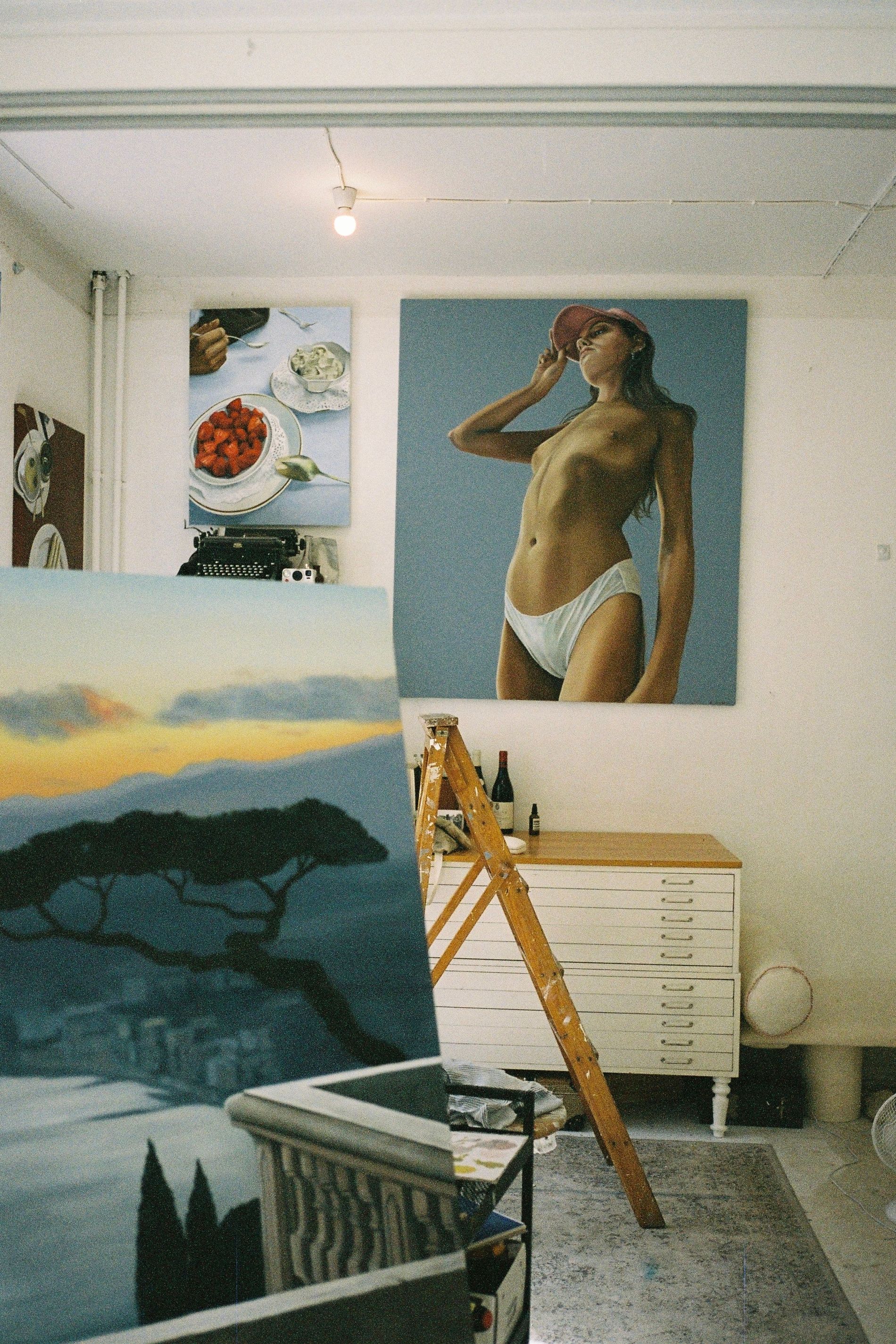
Photo: Oona Åman

Photo: Oona Åman
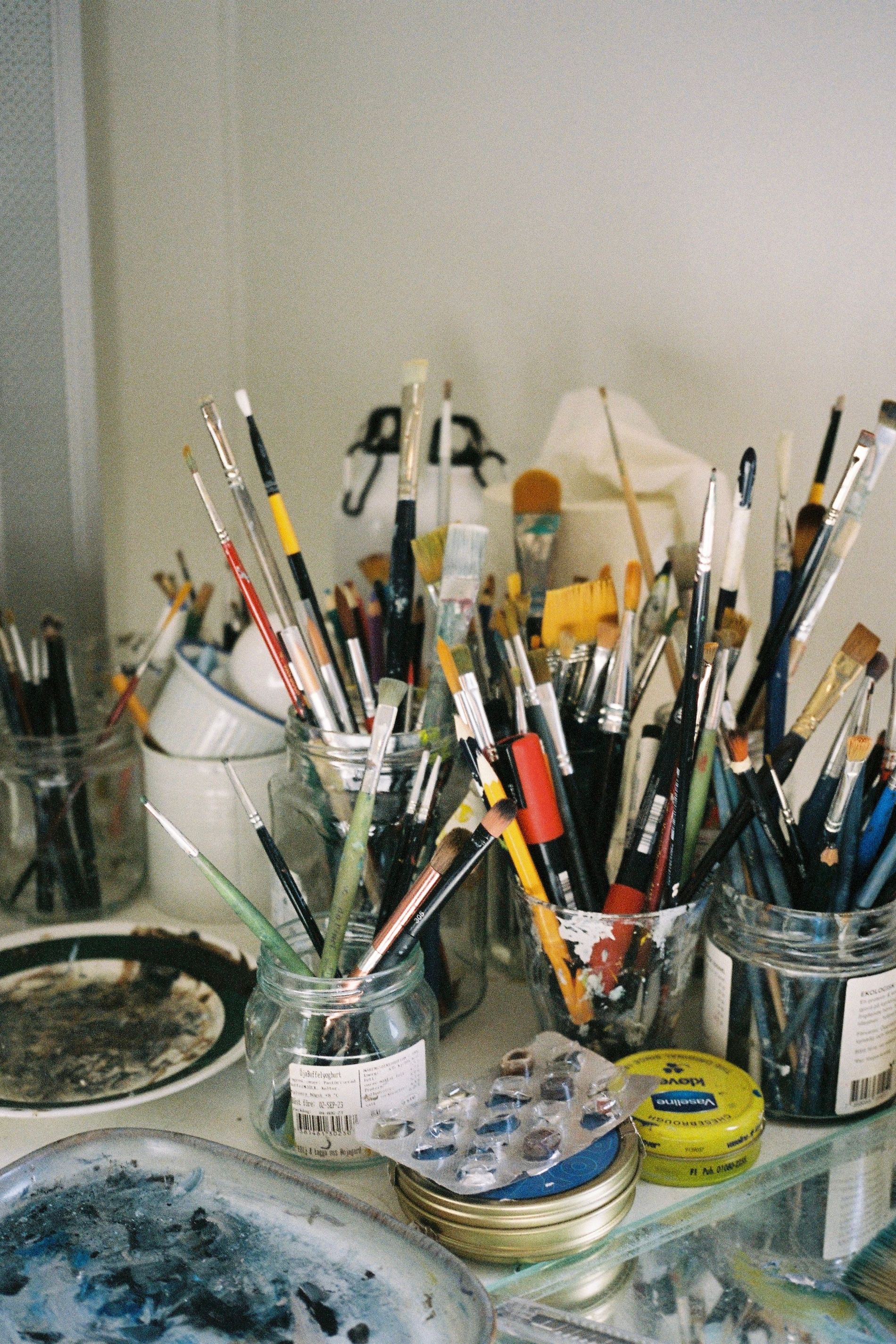
Photo: Oona Åman
Weeks ahead of the opening, the pieces that will take their place in the exhibition are hung throughout the sun-bathed studio space: a dreamy depiction of the ocean (“Water is the lamest thing to paint,” she says, gesturing at her own impossibly technical depiction of gently rolling waves. “Water paintings suck balls.”), a nude of one of our mutual friends, a serving of strawberries and cream. On one wall, a half-finished painting of a mosaic table on which sits two glasses of red wine and a serving of sourdough bread. “I never paint a wine that I haven’t had,” she says, matter-of-factly, before asking if I’d like a glass of white or rose. Together, the paintings reflect a decadent southern Europe retreat – a portal through which Larsson can escape from the sometimes-harsh Swedish climate.
I never paint a wine that I haven’t had.
Lisa Larsson
Whilst many artists who paint from life would claim to choose their subjects intuitively, for Larsson, the contents of her paintings simply emerge from her subconscious. “This sounds weird,” she prefaces. “But I go to sleep and I can’t fall asleep normally. Then you’re in this dark room and you’re just f***ing claustrophobic, hearing your own breathing. Normally, I just think about work, because I love my job. And then, it’s ADHD, one thing leads to another thing and all of a sudden you have this image of something that you want to paint. I see it so clearly.” The following morning, she’ll sift through her own image bank – iPhone photos of food, people, places, things – and find whatever appeared to her the night before. Then she’ll pick up her paintbrush and get to work.
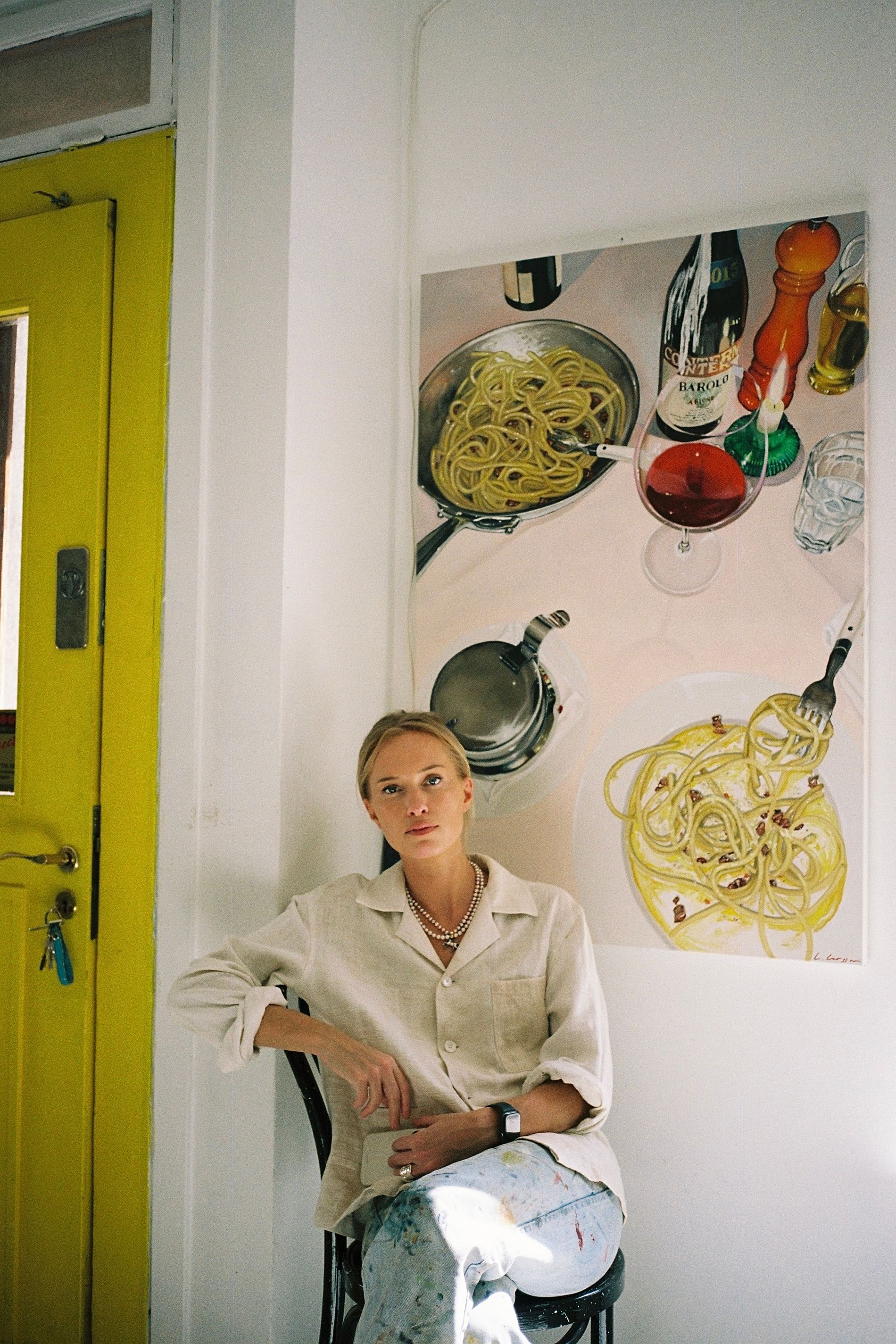
Photo: Oona Åman

Photo: Oona Åman
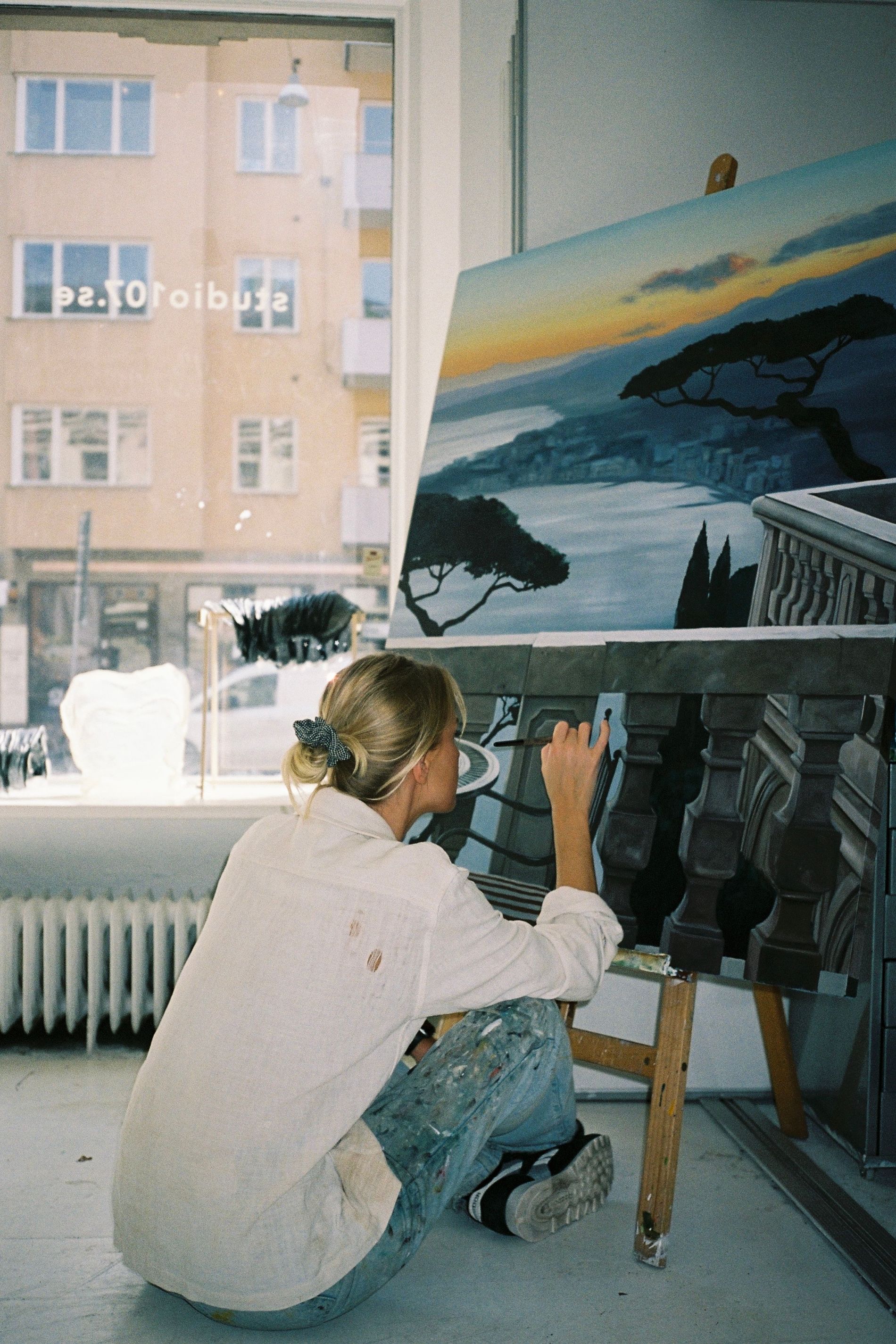
Photo: Oona Åman
There is one subject in particular that seems to preoccupy Larsson’s overactive mind: food and drink. Grapes, olives, beans, asparagus, cacio e pepe and endless glasses of wine – both red and white – appear in the exhibition. “Will you hate me if we go out for dinner and I take pictures of the food?” She asks. “I take pictures of everything I eat. It’s a nice reference bank, but I also like looking back at what I ate. It’s like a journal.”
It’s a fitting obsession – not only does the artist love a long, wine-soaked dinner, at a time when her career was in flux, she participated in Swedish Master Chef. Larsson had just returned to Stockholm from New York (she attended Parsons for a couple semesters before dropping out and setting up her painting practice) when the pandemic hit, turning her brief stint home into a more permanent living situation. “It was scary because no one knows me here – I don’t have collectors here, I don’t have anything here,” she says. “So I applied to Master Chef to do some free PR.” Playing the role of the “kooky girl” (her words), Larsson came seventh (she was eliminated on an omelette, of all things) and made a name for herself in the process. “It f***ing worked,” she says. “I started getting recognised on the street. And it’s an easy name – Lisa Larsson.”
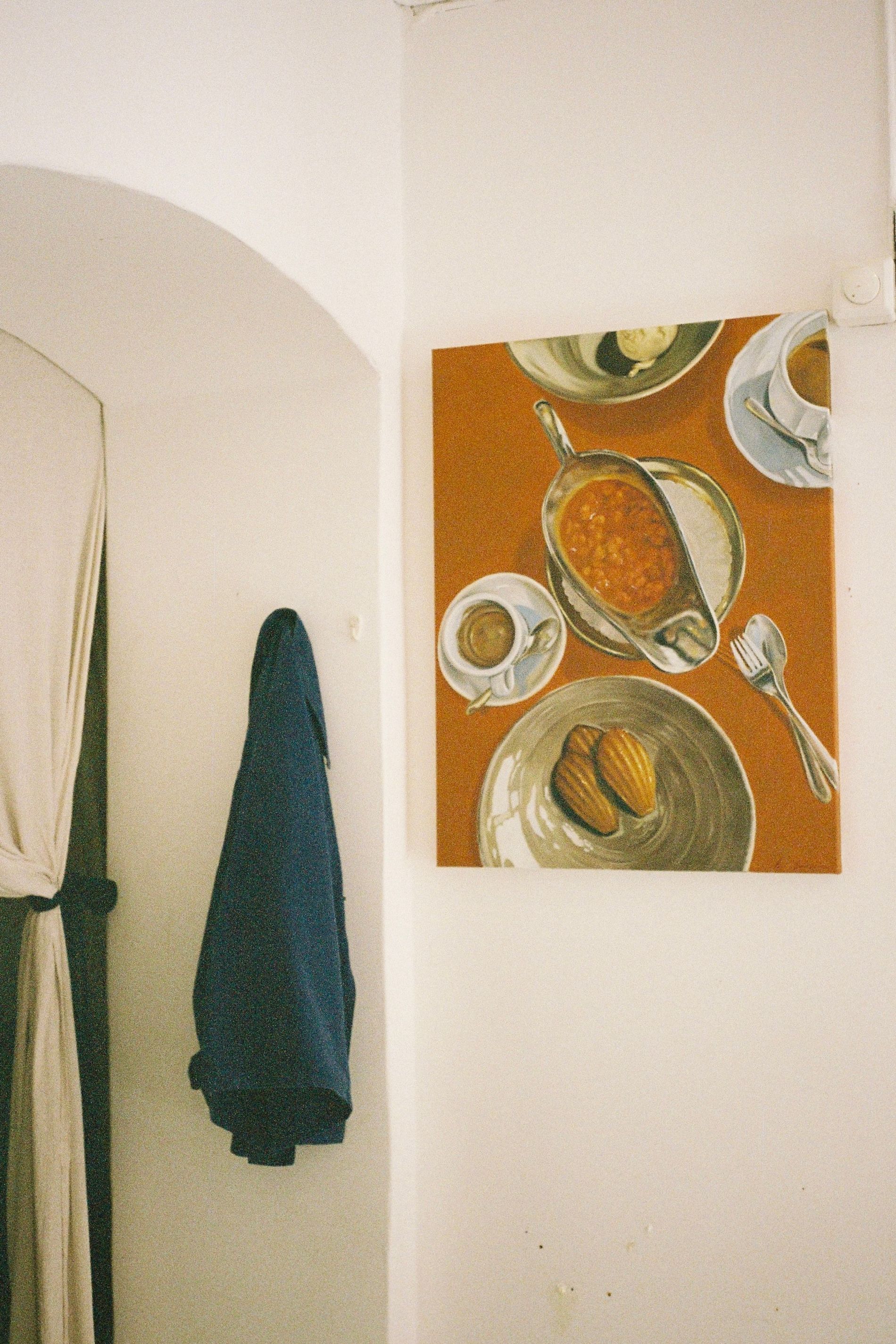
Photo: Oona Åman
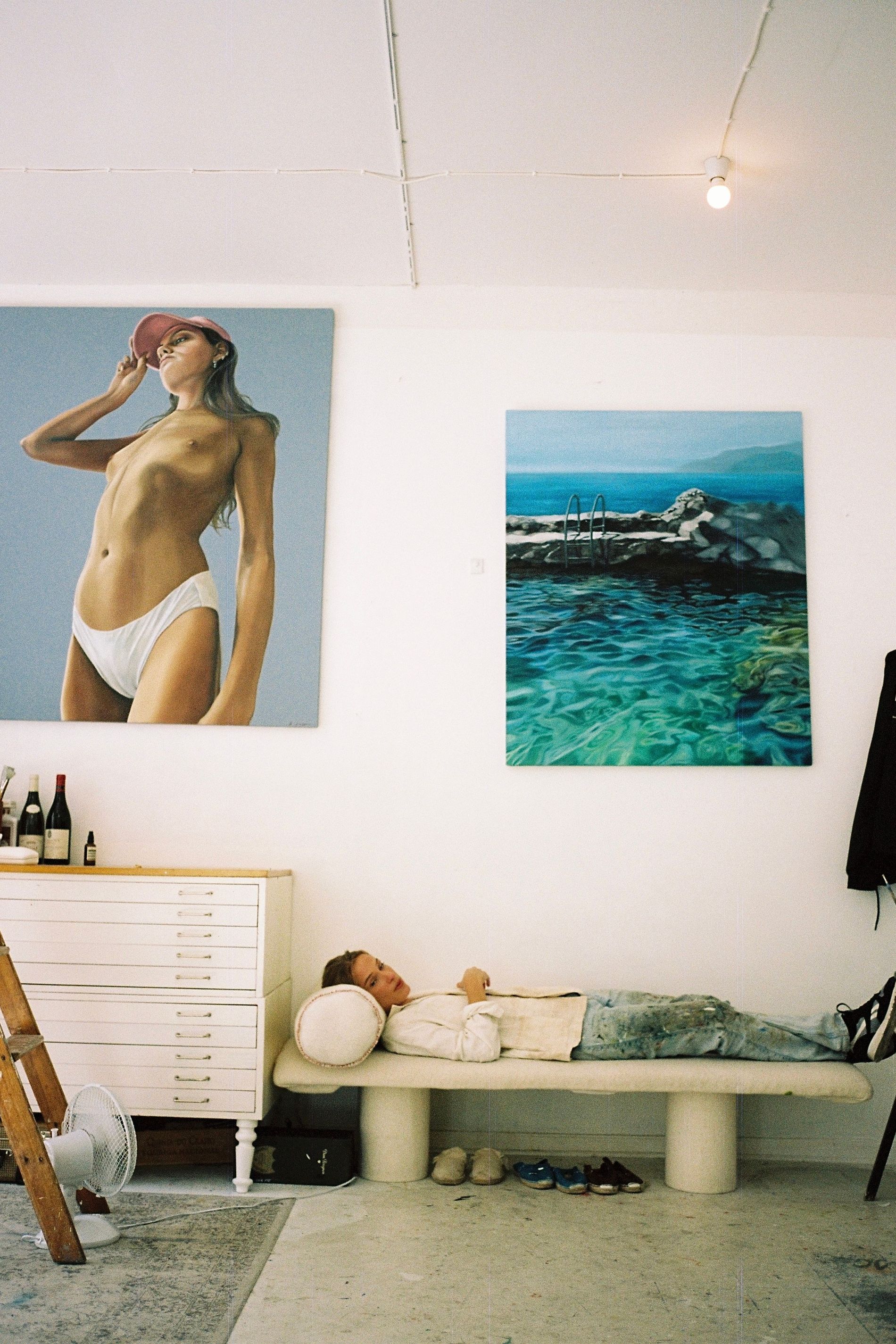
Photo: Oona Åman

Photo: Oona Åman
It was this boost in attention, coupled with a single-minded dedication to her work (“I just worked my ass off painting,” she says) that led to a comfortable career. With no gallerist in the middle, Larsson pockets 100 per cent of her earnings (after tax, of course) and enjoys a personal dialogue with her collectors, oft selling her pieces over Instagram. “I love when young people buy, but I don’t see a red thread, it’s just people who actually love it,” she says of her collectors. “I know for a fact that my work is going to end up on a wall.”
Though she revels in the process of painting, she also applies a certain Swedish practicality to her practice, converging art with commerce to create the sort of pieces – at the sort of accessible prices – that can sustain her for years to come. “My practice needs to be sustainable,” she says. “I need to do this for the rest of my life.”
